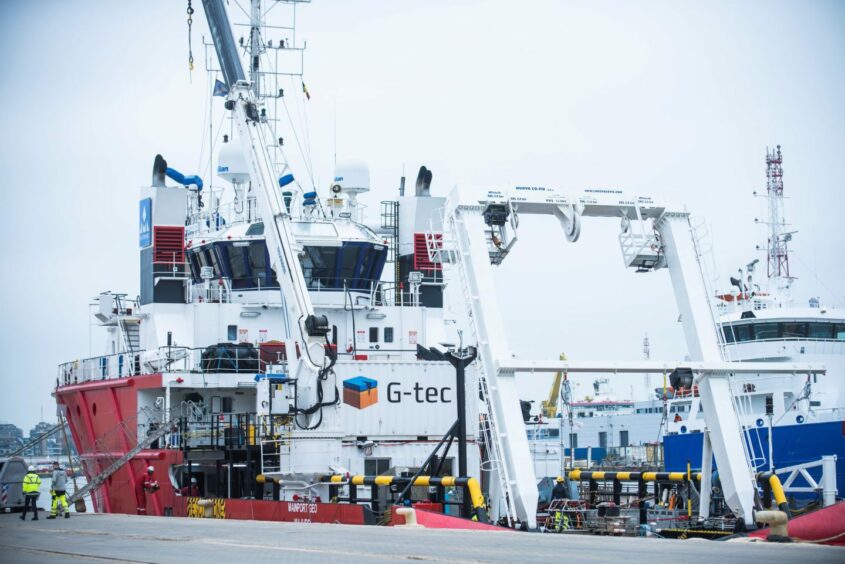
Geophysical studies for two major offshore wind projects have got underway off the coast of Aberdeenshire and Orkney.
Thistle Wind Partners, developer of the ScotWind Ayre and Bowdun schemes, announced on Thursday that survey work is now ongoing.
G-tec is leading the first phase of the work, which is the geophysical surveying of the seabed at both sites, leasing zones NE2 and E3.
It is being supported by GAC UK’s Aberdeen and Orkney offices for vessel logistics, while Newcastle-headquartered Cathie is providing advisory services.
Work is forecast to run until October, during which time the survey vessel will cover an area of almost 150 miles squared.
Data collected will feed into ground modelling studies from October onwards, while metocean surveys begin around the same time.
TWP’s – a joint venture between DEME, Qair, and Aspiravi – engineering team is then expected to complete pre-FEED work for the two projects by mid-2024, with a second round of geophysical studies planned for next year.
Ayre offshore wind farm will be a 1 gigawatt (GW) floating project located to the east of Orkney.
Meanwhile, Bowdun, which will have a 1 GW capacity, is earmarked for off Aberdeenshire and is named after Stonehaven’s distinctive coastal landmark,
A final investment decision on both developments is scheduled for 2028, if consenting is achieved in 2025.
Ian Taylor, project director at TWP, said: “We are comfortable with the pace of development of the two projects and the schedule we have in place.
“We plan to enter the construction phase in 2029, and like all ScotWind developers, we do get questions about why we have chosen a particular timeframe.
“Bearing in mind that we have a floating wind project in the mix, we are keen to leverage the learnings and enhanced designs and technologies that will be available by the end of the decade.
“There are still many technical challenges ahead for floating offshore wind. In tandem, each year gives us greater certainty that the local supply chain and port infrastructure will be ready.”
TWP will also continue its bird and marine mammal studies this summer, after they were launched by contractor APEM in March last year.
Altogether, these studies are expected to run for around two years.
Mr Taylor added: “We are investing in some of the most advanced monitoring techniques for our environmental studies, such as APEM’s LiDAR technologies for measuring bird flight heights. Taking the time to gather the best data for our final designs ensures that our wind farms have the most harmonious relationship with marine life and other maritime industries.”
Recommended for you

